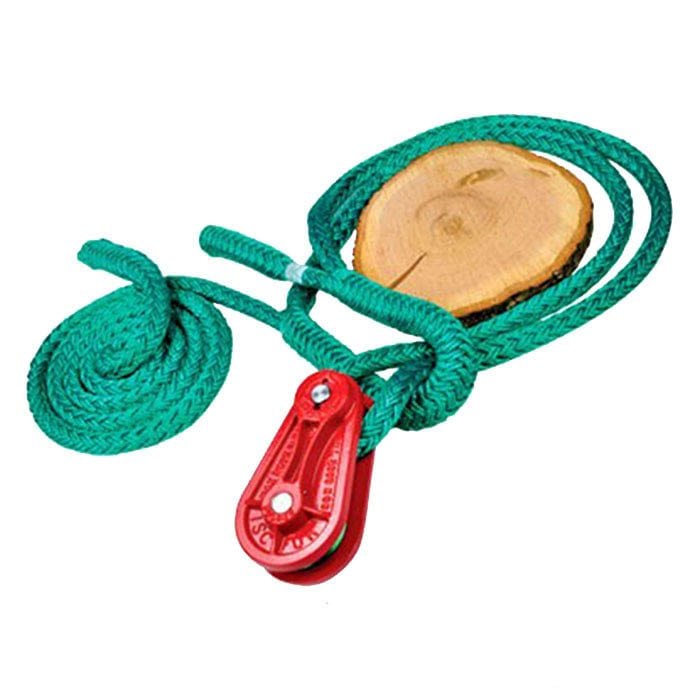Your cart is currently empty!
Mechanical Advantage Systems in Search and Rescue
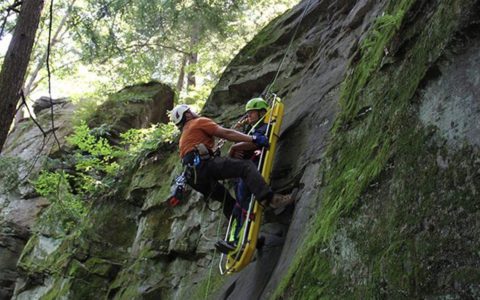
-

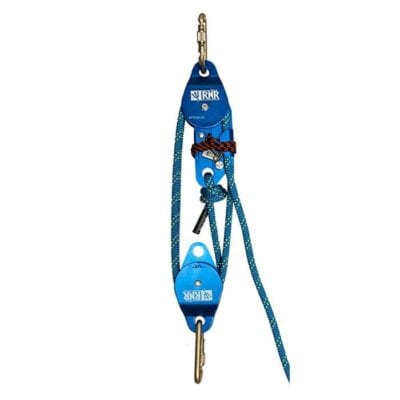 RNR Mechanical Advantage System with R-N-R Pulleys$805.00 – $1,200.00
RNR Mechanical Advantage System with R-N-R Pulleys$805.00 – $1,200.00
Mechanical advantage is a critical component of modern-day search and rescue missions.
This application embodies the idea of “work smarter, not harder.” Using a series of ropes, pulleys, anchors and carabiners, a single person can move a heavy load over great distances with little to no strain at all. Whether you are a firefighter, a mountain climber, a survivalist, or just someone looking to improve your skillset, you can benefit from understanding how mechanical advantage systems work.
In the guide below, we will explore the different types of mechanical advantage systems and what you can do with each of them in a search and rescue situation.
What Is Mechanical Advantage in Search and Rescue?
In general, “mechanical advantage” (MA) refers to the amount of assistance your rope and pulley system provides you in a search and rescue situation. Mechanical devices are used to help a person carry significantly more than his or her own body weight so that a small, light person could still lift a tall, heavyset person without extra strain. The way that the pulleys and ropes are configured determines how the weight is distributed (or how much extra weight the person using them can lift). They also determine how much rope is needed to move the load a certain distance. In a 3:1 mechanical advantage system (MAS), a 300 lb load would feel like 100 lbs, and 3 feet of rope will move the load up 1 foot. Understanding how mechanical advantage is calculated will help you create the perfect pulley configuration for any rescue mission you’re up against.
Components of a Mechanical Advantage System
Different types of mechanical systems are comprised of different elements, but the primary components are the same across the board. The size, shape, weight bearing capacity and other specifics will need to be adjusted based on the scenario that you are dealing with. Here is a look at the fundamental tools used in a mechanical advantage system for search and rescue:
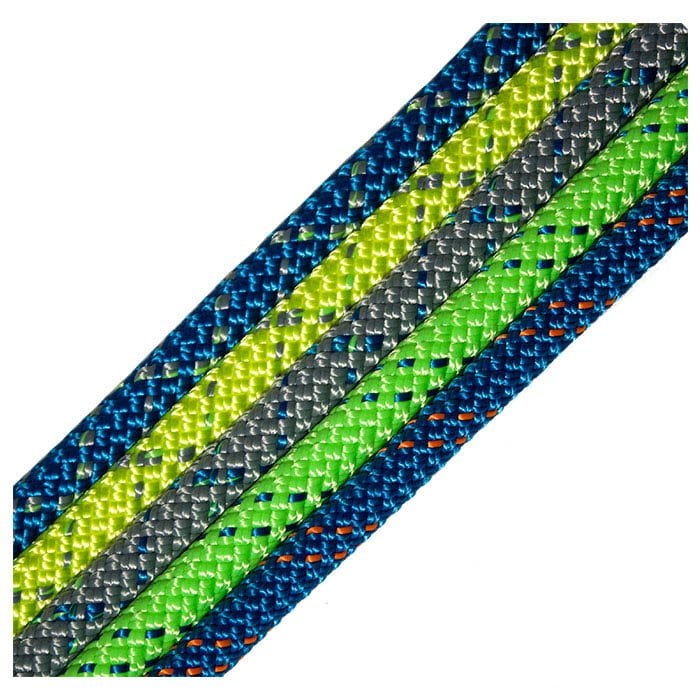

Rope: Used to link all the other components together and provide a gripping source for the rescue team and the load being carried (a person being rescued or rescue supplies being delivered to someone in need).
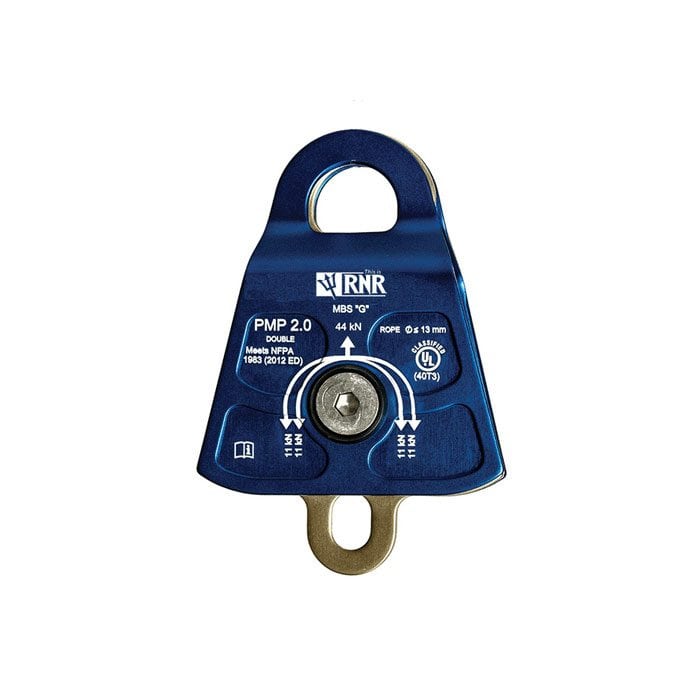

Pulley: Used to change the direction of the rope or reduce the amount of weight assigned to the load (make a 200 lb man feel like he only weighs 50 lbs). Learn more about pulleys in mechanical advantages in the next section.
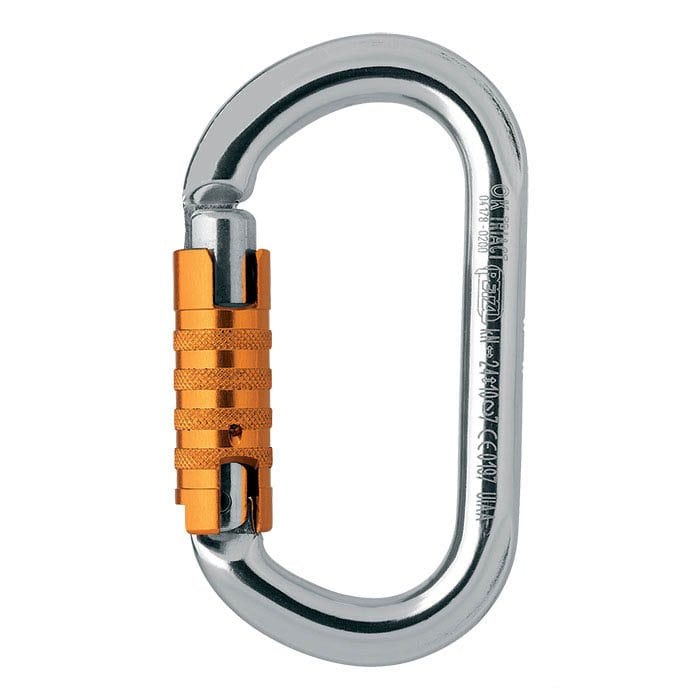

Carabiner: Used as a linking device within the MAS, usually to hook loops of ropes together or to attach a load to a pulley. To determine which carabiner is right for your setup, check out our Carabiner Selection Guide.
Anchored Pulleys vs. Travelling Pulleys
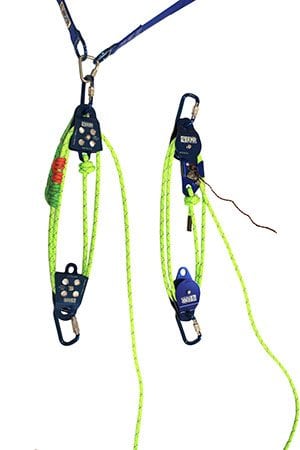

The pulley attached to your load is called a travelling pulley. It moves freely along the rope to lift the load to its destination. In order for this to work though, one end of the system has to be anchored. This is what gives the pulleys and ropes a “mechanical advantage.” Otherwise, the rescuer has to absorb the weight of the load, plus the weight of all the components in the system.
Any pulley that is not attached to the load is called an anchored pulley. These pulleys remain stationary and are only used to change the direction of the rope gliding through them. In an area where ropes need to be hooked together but not necessarily changing directions, a carabiner is a good alternative to a pulley.
Types of Mechanical Advantage Setups
As we mentioned before, the way a mechanical advantage system is set up plays a huge role in the “advantage” it provides to the user. There are three main categories of mechanical systems:
Simple System: As the name implies, a simple mechanical system is the most straight-forward setup. A single rope is looped through a set of pulleys, and all of the pulleys move at the same speed.
Compound System: A compound system involves one simple system pulling another simple system to increase the mechanical advantage. The mechanical advantages of each system individually are multiplied to create a much higher overall MA. For example, a 2:1 simple system pulling a 2:1 simple system would yield a 4:1 compound system.
Complex System: A complex system is the combination of a compound system and a simple system (basically a simple system within a simple system within a simple system). Once again, the mechanical advantage of the overall system the product of the individual systems multiplied together. If a 2:1 simple system was added to the compound system used in the above example, the result would be an 8:1 complex system.
Creating and Calculating Mechanical Advantage for Search and Rescue


Creating a mechanical advantage system will do you no good if the setup is not sufficient for the task at hand. The actual calculation process is quite complex, but it is covered in most search and rescue training. For the purpose of this guide, we will touch on some of the basics to give you a general understanding of the numbers involved.
The goal is to figure out how far you need to move your load and how heavy that load is in order to create the appropriate MAS. Of course, this information isn’t always readily available. If your “load” is a person or a large bag of supplies, you may only be able to approximate the weight of the load. That is one of the main reasons why these calculations are considered “theoretical,” as described in the next section.
Some mechanical advantage systems come pre-fabricated, so all you have to do is make sure the system has enough rope and enough strength to complete your rescue. The amount of rope you need will be based on how far your load needs to travel and the value of the mechanical advantage. If you have a 3:1 MAS 20 feet above where the load needs to go, you will need 60 feet of rope, plus additional rope for each end of the system.
If you’re making the system on your own, you will need to create a basic drawing to visualize how the MAS functions. This is mostly required to make sure that the pulleys are moving the rope in the right direction. The biggest considerations will be the number of pulleys and the length of rope you need. You will also need to figure out how your system will be anchored, but that is a changing variable. It may be a nearby rock, a tree, a pole, or even a person if the load is not too heavy.
For more information about the specific calculations involved in determining mechanical advantage, please refer to an experienced search and rescue instructor or the guides provided in your training.
Theoretical Mechanical Advantage vs. Ideal Mechanical Advantage vs. Actual Mechanical Advantage
The calculations above describe ideal scenarios where no real-world obstacles come into play. This is considered to be the ideal mechanical advantage, which may not reflect the actual MA of the system. To be more precise, you will be working with the theoretical mechanical advantage in a search and rescue environment. Each time the rope changes direction with a pulley or bends around a carabiner, a portion of the overall mechanical advantage for the system is lost (approximately 10% for pulleys and 2-3% for bends). This has to do with the friction created at that turning point and the weight the pulley or carabiner adds to the MAS.
Changes in altitude will also have an impact on the mechanical system due to the weight of gravity. Wind directions, equipment durability, and movement of the load itself will further influence the actual mechanical advantage at work. It is nearly impossible to take all of this into consideration, so err on the side of caution and create a mechanical advantage system that is overly sufficient for your rescue without breaking the Rule of 18 – see next section for details.
Pro Tip: Using pulleys that are three times larger than your rope’s diameter will create the least amount of MA loss.
The Rule of 18 (EXTREMELY IMPORTANT)
In theory, the more mechanical advantage you have, the better off you are. This can be dangerous in certain search and rescue situations. The Rule of 18 refers to the mechanical advantage of a system multiplied by the number of rescuers operating the system. The product of these numbers should be below 18 to stay on the safe side. For instance, a 3:1 MAS operated by 6 people would still be safe because 3 x 6 = 18. If that was a 2:1 MAS, the result would still be a safe 12. If it was a 4:1 MAS, it would be a potentially dangerous 24.
Why does all of this matter? Because having too many rescuers to carry a load takes away the pressure that each person feels. It’s harder to notice a problem occurring if the weight is distributed over a large group of people. If the load is an injured person needing to be saved from a cliff, the rescuers may not feel this person slipping off the mat or getting hit by the rocks below. With a limited number of rescuers, a tug from the rocks or a quick change in pressure would be much more noticeable. Simply put, you don’t want too many cooks in the kitchen. The Rule of 18 prevents that from happening.
When hauling a “human load,” do not use a mechanical advantage higher than 5:1. This is the standard that is considered safe across all search and rescue scenarios.
Final Thoughts
Mechanical advantage has become extremely valuable in the world of search and rescue, harnessing basic laws of physics to make near-impossible missions seem effortless. Learn how to use this to your benefit, and you can accomplish tremendous feats in this industry.

